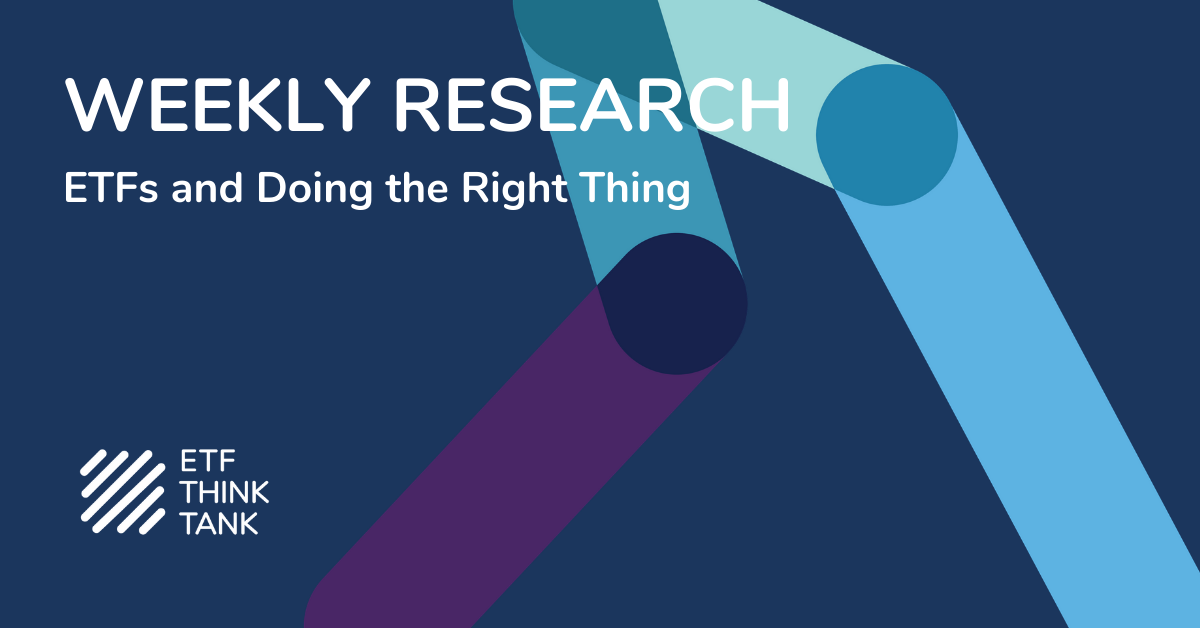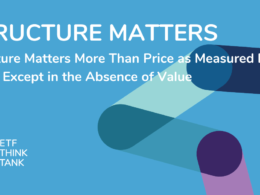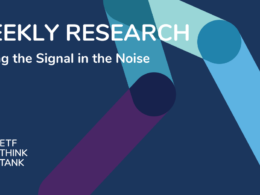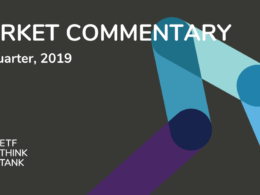Although Veterans Days is only one day a year, there are ETFs that can honor our Vets throughout the year, and we want to remind investors that aligning principles with principal can provide for the best outcome. With this in mind, we highlight three subjects. First, we draw attention to two ETFs which focus on the military: InsightShares Patriotic Employer ETF (HONR) and Pacer Military Times Best Employers ETF (VETS). Second, USAA agreed last week to be acquired by Victory Asset Management (VCTR). Valuations in the TETF Ecosystem are very compelling based upon the historical norm, and merger deals are becoming more frequent. The index currently trades at a forward 2019 estimated PE of 13.6 times. As we pointed out in an earlier piece, ETF industry growth with global presence makes scale more important. According to Byron Lake, head of international ETFs at JP Morgan Asset Management, global ETFs are set to grow to $30 trillion from $5 Trillion today. Third, there have been countless articles assessing the outcome of the mid-term election, but two standout ETFs are the Global X US Infrastructure (PAVE) and EventShares Us Policy Alpha (PLCY). (See details about today’s Policy conference call)
Comparing Vets to HONR
Investing according to your principles requires a deep dive around an index methodology and an assessment of how committed one is to the investment process. Meaning that – in a passive index process, there is little or no subjectivity beyond the methodology that is defined by the establish rules, but those rules can result curiously in different holdings, different risks and ultimately a meaningful outcome variance. In comparing VETS to HONR, as an example, while both use “The Military Times Best for Vets list to evaluate and rank U.S.-listed companies according to how well they recruit and support veteran and active service members,†because VETS has a scoring methodology. Its holdings are only 44 companies, while HONR holds 104. To learn more about both indexes, we encourage readers to go to the Index Guidebook (HONR) and the VETS Index website. Both funds have plans to give back to the military.
M&A Continues
Two important facts about the TETF Ecosystem! First, there are no short cuts to providing a live portfolio track record. It is in part for that reason why the acquisition by Victory Capital Holdings (VCTR) of USAA Asset Management ($69 Billion in AUM) should really be viewed as a merger of equals. Victory went public in February 2018, and after the combination of both Harvest Volatility Management and USAA, it will be managing $144 billion. As of September 3rd, 2018, prior to both acquisitions closing, Victory reported AUM of $63.6 Billion. Twenty ETFs will represent about $4.3 billion of the consolidated AUM with 6 ETFs coming from USAA. In terms of the ETF market, this makes Victory a small player in the ecosystem. However, with a platform for growth designed by an aggressive management team, clearly this is a player to watch.
The second M&A fact is that the ETF Ecosystem is made up of companies involved in trading, service providers, and technology companies that deal with risk, research, and index construction. Similar to asset managers, scale provides leverage and a competitive barrier. As a result, acquisitions are often the best solution to building a definable moat with synergies. As a result, Virtu Financial has agreed to buy Investment Technology (ITG) for a 40% cash premium over ITG’s average closing price.
[1] See Bloomberg FA function on the TETF
Getting the Right Policy for the Capitalist in You
There remains little certainty in these markets these days, but with most of the mid-term election results now behind us, investors may begin to have more confidence in this seasonally strong period. This past week, we listened to many “market gurus.” Analysis by paralysis seems to be the expected outcome. However, because the political process led by President Trump will remain dynamic and fragile, a broader actively managed strategy is helpful to follow in defining investment research and arguably a neat package as a solution. Therefore, we highlight EventShares Policy (PLCY) and encourage readers to listen and attend the webinar today, November 13th @ 2:00pm. Coming into the election, the portfolio held about 5% cash and looked as follows:
PLCY Portfolio: Current Allocation | Policy Themes

The most interesting part about the portfolio is the small overlap it provides across asset classes (See above diagram). Active share is clearly defined in this portfolio. The active fund was tilted towards Small-Midcap stocks, so it did pullback hard with the market. Despite concerns about the trade war and the election outcome, the portfolio managers did not pull the trigger on their option to go short so their remains a level of optimism.
Alternatively, a straight infrastructure ETF may be the more obvious way to play the midterm election outcome. Admittedly, those investing in this thesis have often been disappointed, but regardless, gridlock can’t last forever. Time is not in favor of a continued delay in infrastructure spending and politicians will need to demonstrate to their constituencies that they are doing something to solve this inevitable problem. How the funding is raised may remain the key question, but further delays will not make fixing the problem less expensive. There are multiple ETFs that bear the name infrastructure, but ETF investors know that sometimes a name can be misleading. Thus, our choice is the Global X Infrastructure Development ETF (PAVE), which only has a 2% overlap to the S&P500, so active share is high. Many of the other choices, apart from the iShares US Infrastructure ETF (IFRA), have utility exposure and or are globally diversified.
Thank you again veterans for your service! We are proud to be Americans and hope that investors embrace impact investing with the intent of making your sacrifice more than an annual remembrance.












